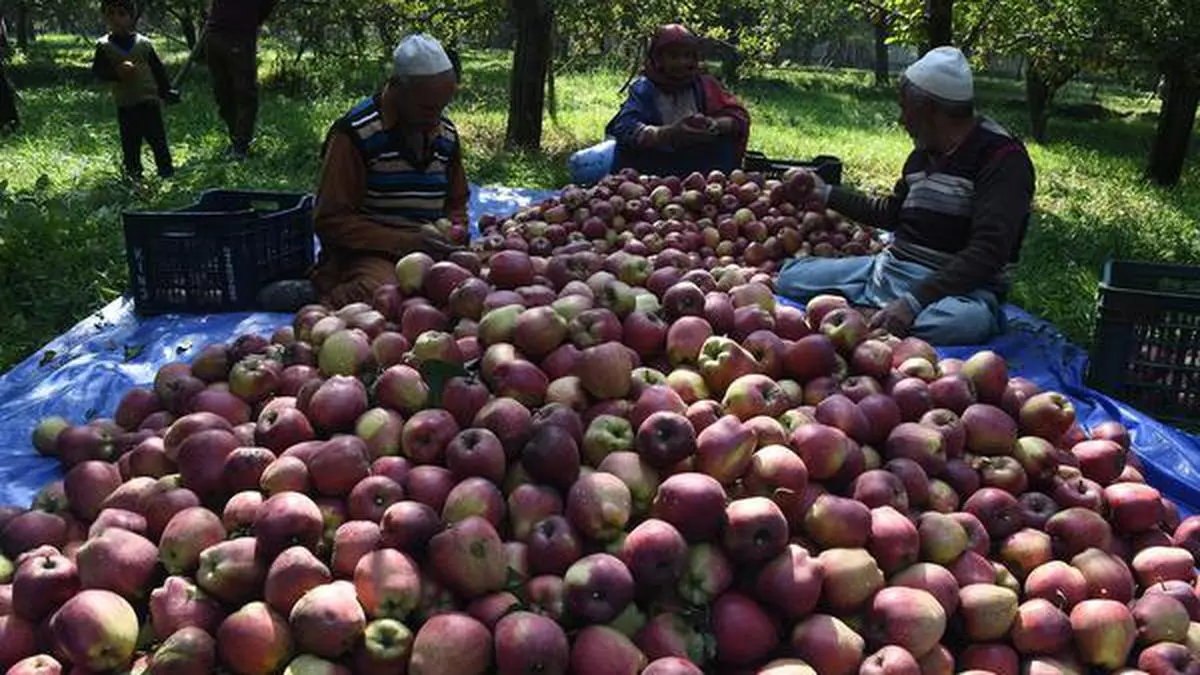Apple prices nearly double as heavy rains, landslides in Himachal damage crop
Apple prices have nearly doubled in wholesale and retail markets after Himachal Pradesh faced one of its worst disasters this monsoon, particularly in July and August, damaging orchards across the hilly State.
According to Ravinder Chauhan, President, Apple Growers Association of India, the heavy rains that lashed across the Himalayan State affected the production as well as quality of the fruit.
“This year has been attractive and advantageous for apple growers. In addition to the problems of crop and quality loss, good quality apples have gone to the cold storage. At least 30-35 per cent of Himachal apples go to storage,” he said.
Naresh Jawa, CEO-AllFresh, a WayCool Enterprise, said: “The surge in apple prices is ascribed to irregular rainfall patterns in Himachal Pradesh from late April to August this year, causing significant crop damage and the production of substandard apples, impacting harvest and quality for the first time in decades.”
2nd largest grower
Himachal Pradesh is the second-largest grower of apples, making up at least one-fourth of the total production in the country. Kashmir, the largest grower, contributes 70 per cent.
Data from Agricultural and Processed Food Exports Development Authority (APEDA) show that in 2021-22 India produced 2.44 million tonnes (mt) of apples with Kashmir producing 1.72 mt and Himachal 0.64 mt.
Reports from Himachal said key-growing areas such as Shimla, Kullu, Mandi, Chamba and Kinnaur recorded over 400 per cent rainfall during July 7-11. Floods and landslides as a result destroyed apple orchards, causing massive losses and damages.
Vikram Rawat, owner of Kalasan Nursery, said the crops, especially in the higher elevation, were coming up well during May-June before weather wreaked havoc.
“The heavy rains led to landslides and road blocks. While we in the lower region of the State harvest early, those in upper ranges lost either apples that were harvested or were ready for picking,” he said.
Rawat said he got ₹200 as wholesale price against ₹100 a year ago.
Jawa said during the Kashmir apple season, prices declined temporarily. “However, in the post-season, there has been a resurgence in elevated prices for Indian apples, attributed to the ripple effect of adverse weather conditions in Himachal,” he said.
Impact of rains
Devender Sharma, a wholesale trader in Shimla, said apple prices were higher this year compared with last year on crop loss.
Data available on Agmarknet.in, a unit of the Agriculture Ministry, show that the modal price (the rate at which most trades took place) at the Kathua agricultural produce marketing committee yard in Jammu for the Delicious variety was ₹5,500 a quintal against ₹3,500 a year ago. The modal price of the Delicious variety at Una in Himachal Pradesh was ₹10,000 a quintal compared with ₹7,000 a year ago.
Apple Growers Association President Chauhan said excess rain in the growing areas had affected the land’s physiology, while intake of fertilizers was affected.
“Soil erosion and landslides caused further damage. Apple contributes nearly ₹6,000 crore to Himachal’s economy. Though prices are good, the apple economy might drop to ₹3,000-4,000 crore,” he said.
Jawa said compounding their woes, growers were hindered from using fungicides and pesticides, resulting in the salvage of only 25 per cent of the crop. Further, farmers, realising that the crop was poor, waited for the prices to improve further. “But landslides caused total disruption in movement of apples to controlled atmosphere Sstorage which helped in stabilising prices during season and off-season. This caused more losses too,” he said.
The CEO-AllFresh said looking ahead, the import of apples from countries such as Turkey, Poland, Italy, etc will play a pivotal role in determining prices, given the limited domestic apple storage. If the apple import from these exporting countries remain unaffected, a subsequent decrease in prices could be anticipated in the coming months.
